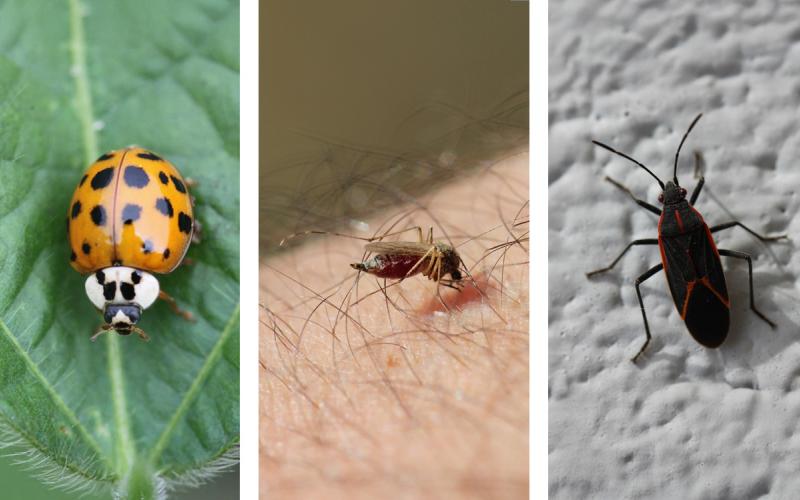Wheat streak mosaic virus (WSMV) is a viral disease, which has been found in samples recently sent into the SDSU Plant Diagnostic Clinic. Wheat streak mosaic is transmitted by wheat curl mites, (Aceria tosichella, Keifer). It is also easily transmissible through sap by mechanical inoculation. The wheat curl mite vector feeds on young, lush growth of wheat. Mites develop from eggs to adults within 8 to 10 days, and their numbers can increase markedly during relatively short periods when the environment is favorable.
Symptoms

The major symptoms of wheat streak mosaic are stunted plants with mottled and streaked leaves (Figure 1.). Light green and dark-green or yellow and green mosaics that coalesce into streaks are characteristic of this disease. In severe reactions, streaks may become necrotic as disease progresses. Other symptoms may occur, such as reduced tillering and spreading rather than erect growth (prostrating).
Symptoms may worsen with stress caused by dry and hot weather conditions. The extent of yield loss depends on the severity of the symptoms and the proportion of the field that is affected. Sometimes an entire field can be infected, while in other instances, a few scattered plants may be symptomatic. In addition to wheat, wheat streak mosaic can also infect oats, barley, corn, sorghum, millets and other grass species.
Management
If your field is infected with WSMV there is nothing you can do at this time to control the viral disease. Foliar fungicides do not offer protection against viral diseases. Fungicides only work to control a fungal disease.
This disease is best managed by:
- Destroying volunteer wheat and grassy weeds before planting winter wheat in the fall. Volunteer wheat and grassy weeds are typically destroyed through a burn-down herbicide application. A two-week break after the burn down to eliminate the green living bridge is recommended to stop the wheat curl mite’s life cycle.
- Avoid planting winter wheat early, prior to mid-September. Planting early in the fall, especially when temperatures are mild, increases the risk of wheat curl mites still being active and able to land and transmit viruses in emerging winter wheat.
- Plant wheat varieties that are resistant/tolerant to WSMV.
- Crop rotation with a broad-leaf crop can also help to break the disease cycle.


